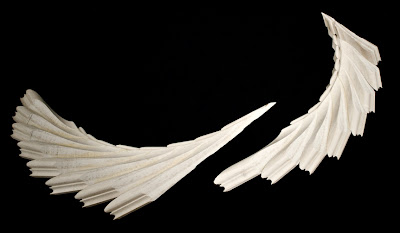Our landscape is based on the characteristics of a braided river in the way that it consists of several strands intertwining within each other, therefore "braiding" together to form a single project. Each strand is made up of units that incorporate incremental change by deconstructing then reconstructing to manipulate the molding profile.
Our units were cut at on oblique angle and incrementally changed in the length of the piece. With two types of strands, the primary and the secondary, we created a rule system for the strands to braid within each other systematically.There are 3 main streams (primary strands) that run “parallel” to each other, with 2 secondary strands weaving in and out. We followed the 1-3-1 proportional pattern, which is carried out by the secondary strand. With this pattern, the strands are able to braid each other in a systematic way.
Our units were cut at on oblique angle and incrementally changed in the length of the piece. With two types of strands, the primary and the secondary, we created a rule system for the strands to braid within each other systematically.There are 3 main streams (primary strands) that run “parallel” to each other, with 2 secondary strands weaving in and out. We followed the 1-3-1 proportional pattern, which is carried out by the secondary strand. With this pattern, the strands are able to braid each other in a systematic way.
Primary strand – This strand is made up of 3 similar units, forming the
pattern AA CC BB CC AA, and was cut on a 40 and 25 degree oblique.
Secondary strand – This strand is made up of 2 similar units, forming
the pattern A B A B and so on, and was cut on a 30 degree oblique.





No comments:
Post a Comment